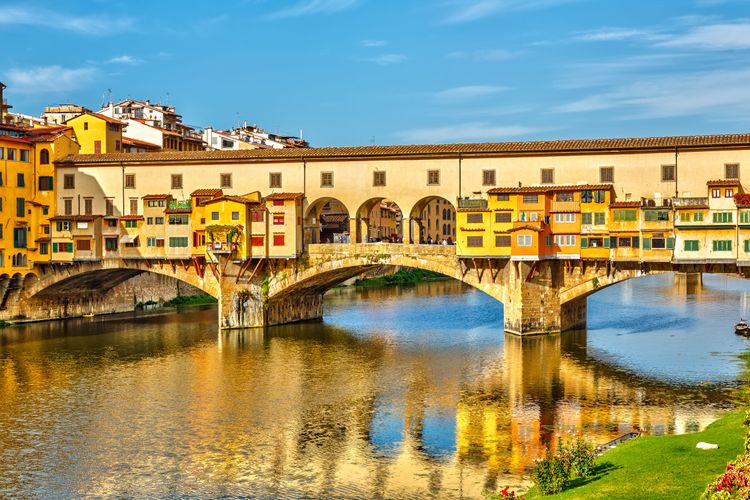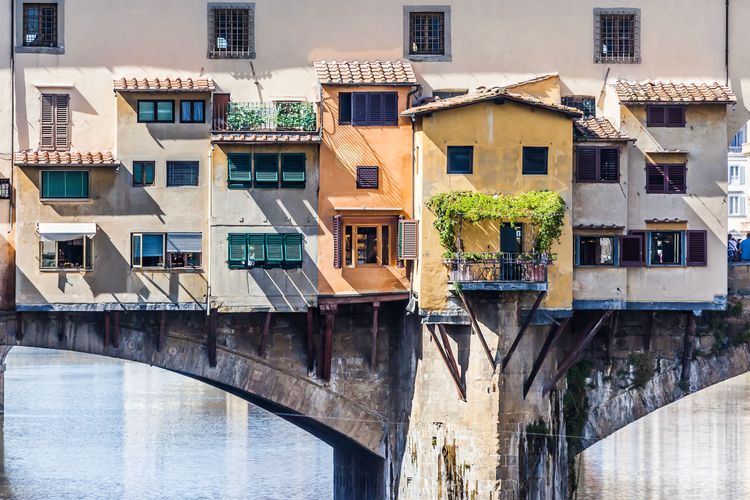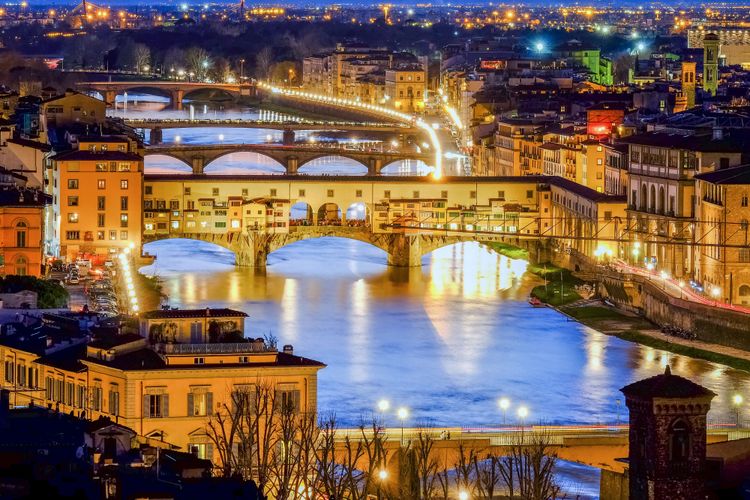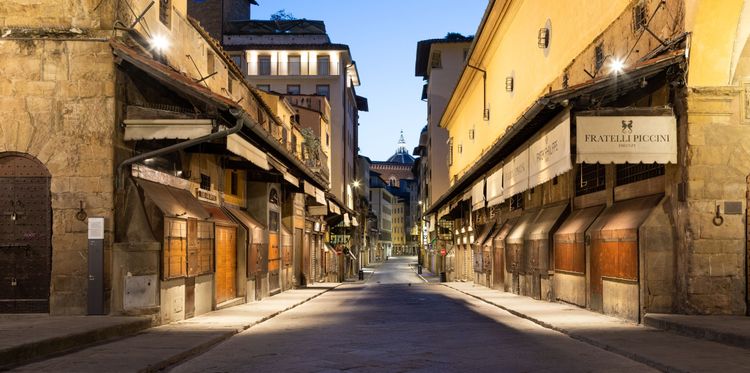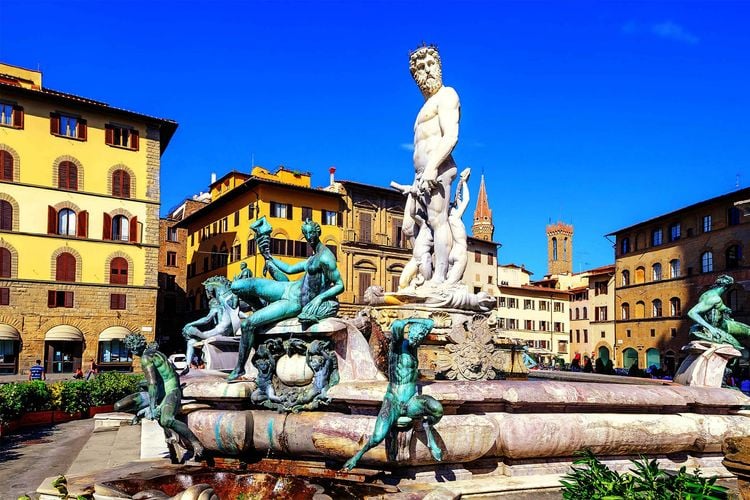There is evidence that an ancient wooden bridge crossed the River Arno as far back as the Roman Empire, linking the two banks of the small, unimportant town that was Florence at the time. This first bridge was swept away by a flood in 1333, by which time the city was already developing into one of the most flourishing cities in Italy.
 Florence
Florence
